CSU Spur: Anchored in community
story by Cyrus Martin published Oct. 1, 2020Renderings of CSU Spur buildings (left to right: Spur Vida building, Spur food building, Spur water building). Courtesy: Hord Copland Macht and CAA ICON.
Even before construction on its CSU Spur campus is completed in 2022, the CSU System has been following an anchor institution model of engaging and working with the communities surrounding the future site.
An anchor institution is a firmly rooted, place-based entity that leverages its assets and scale to increase access to educational opportunities, building community wealth, supporting economic and workforce development, and promoting the health and safety of residents and their environment. The anchor institution approach has gained traction as public-serving institutions acknowledge their impact on nearby historically underrepresented and underserved communities.
“An anchor institution framework is a way of doing community-engaged work that is already within CSU’s wheelhouse as a land-grant institution,” said Tiana Nelson, assistant vice chancellor of External Relations for the CSU System. “CSU has a history of serving our communities, and we feel it is important to intentionally support our Denver neighbors as we construct the CSU Spur campus.”
Community wealth, resiliency
Anchor institutions engage with their communities in mutually beneficial ways, which can include procuring goods and services from local businesses, catalyzing new businesses, partnering with local organizations, hiring locally, creating career pathways, collecting and disseminating research findings, and sharing resources.
“Anchors have a unique opportunity to increase overall quality of life,” said Michelle Sturm, coordinator for the Denver Anchor Network at the Center for Community Wealth Building, who works to engage anchor institutions to create greater economic opportunity in low-income communities of color.
Sturm is encouraged by the work of the CSU Spur outreach team, especially as it continues to develop “genuine relationships with young people, residents, and community partners in GES.”
In the years leading up to Spur’s groundbreaking in May 2020, the CSU System prioritized engagement with residents in the surrounding historically under-resourced neighborhoods of Globeville and Elyria-Swansea (GES) — forging dozens of partnerships with nearby schools, nonprofits, and service providers to better align its existing and future programs, resources, and services with the needs and desires of its nearest neighbors.
CSU’s Denver Extension office actively supports Spur’s community engagement efforts, and is currently contributing to a statewide community needs assessment (CNA) to help, in part, align its current and future programs more closely with the community’s interests and shared resources.
“The community always shapes all of our programing,” said Dan Goldhamer, assistant county director and horticulture agent with CSU Denver Extension, who helped coordinate the assessment and has been active in GES for several years.
Denver Extension delivers numerous programs to GES residents, including afterschool STEM programs for youth and food systems education and support in partnership with organizations such as The GrowHaus, Focus Points Family Resource Center, Big Green, Denver Parks and Recreation, Denver Public Library, and Denver Public Schools, including Bruce Randolph School (BRS), the local middle and high school.
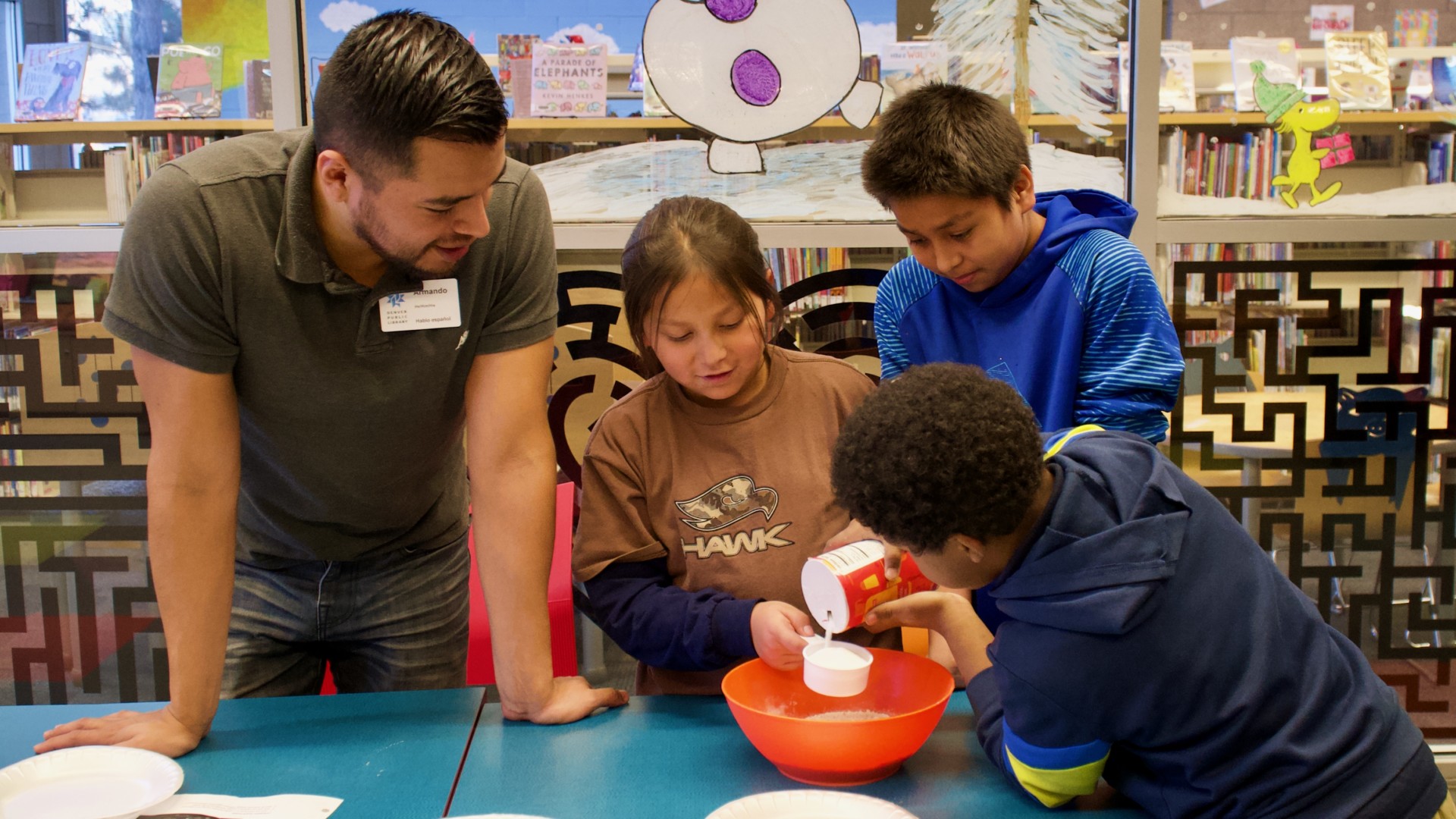
Students learn about insect anatomy through a food-based activity with CSU Denver Extension at the Denver Public Library’s Valdez-Perry Branch, Jan. 16, 2020.
Equitable access
Ashley Stokes, CSU’s associate vice president of engagement and deputy director of Extension, runs point on coordinating the Fort Collins campus’s educational programming at CSU Spur, actively reaching out to all colleges to raise awareness of ways to engage with the future campus.
“Our programs are very multidisciplinary in their approach,” she said. “We have various colleges all participating with different expertise, and they can all come together around these challenging and complex issues.”
Stokes sees the combination of research, innovation, and community engagement at Spur as a platform and opportunity for out-of-the-box thinking, and part of what contributes to its potential strength as an anchor institution with positive impacts, locally to globally.
“We’ve celebrated 150 years at CSU already, and I think that even deepens further our ability to be effective as an anchor institution,” said Stokes, calling attention to what she sees as a clear overlap between Spur’s anchor strategy and CSU’s land-grant mission.
“The land-grant mission helps ensure that what we do at Spur is relevant and connected to all of our communities,” she said. “As an anchor institution, we can have a really positive impact.”
Ensuring equitable and inclusive access to Spur’s programs has been a top priority for Stokes.
“All of our programs have been actively working to make sure we’re listening well to our communities and really coordinating and co-creating with them,” she said. “To do that well, we have to have that lens of diversity and inclusion and equity.”
Youth development, education
CSU Spur has been growing a portfolio of youth-centered programs: working with neighboring schools to inspire more youth to pursue higher education; exploring educational and career pathways in STEM fields; developing mentoring opportunities around Spur’s themes of food, water, health, and sustainability; and providing opportunities for youth to make meaningful contributions to the CSU Spur and National Western Center projects.
A prime example of collaborating with local partners to engage youth with CSU Spur is CSU’s College of Natural Sciences’ Little Shop of Physics (LSOP) program partnering to bring hands-on science to BRS and area elementary schools.
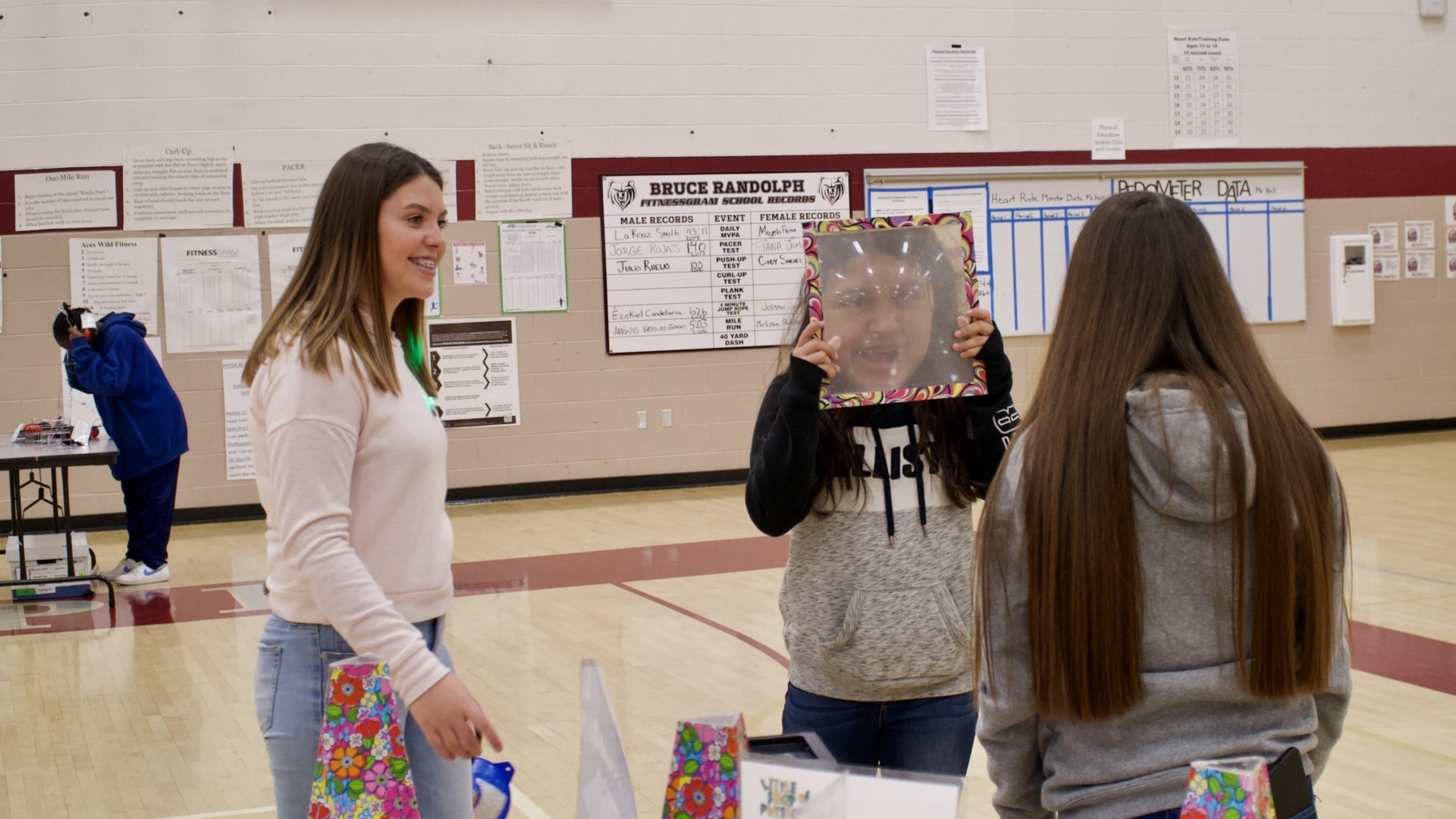
Bruce Randolph 11th-graders guide younger students through science experiments at the Little Shop of Physics Open House in the school’s gymnasium, Nov. 21, 2019.
As part of its anchor work to engage youth, the CSU System has a formal Memorandum of Understanding with Bruce Randolph School, which has 800 students in Grades 6-12. Some examples of work at the school include:
- Co-creation of a district-wide educational pathway with Denver Public Schools, focused on ag-tech, designed to connect students with jobs of the future in agriculture.
- Road to CSU — an annual, daylong event to energize and provide grade-relevant information for students about college.
- Youth Action Team (YAT) — a cohort of high school students who provide insight and work on a project related to the CSU Spur and National Western Center campuses; the program will continue as a way to engage youth voices in the project.
- Youth Memory Project — with technical support from History Colorado, nearly 60 students learned interviewing and photography skills, collected stories from peers and family members about their community’s history, and presented their projects at an open house in the school’s library.
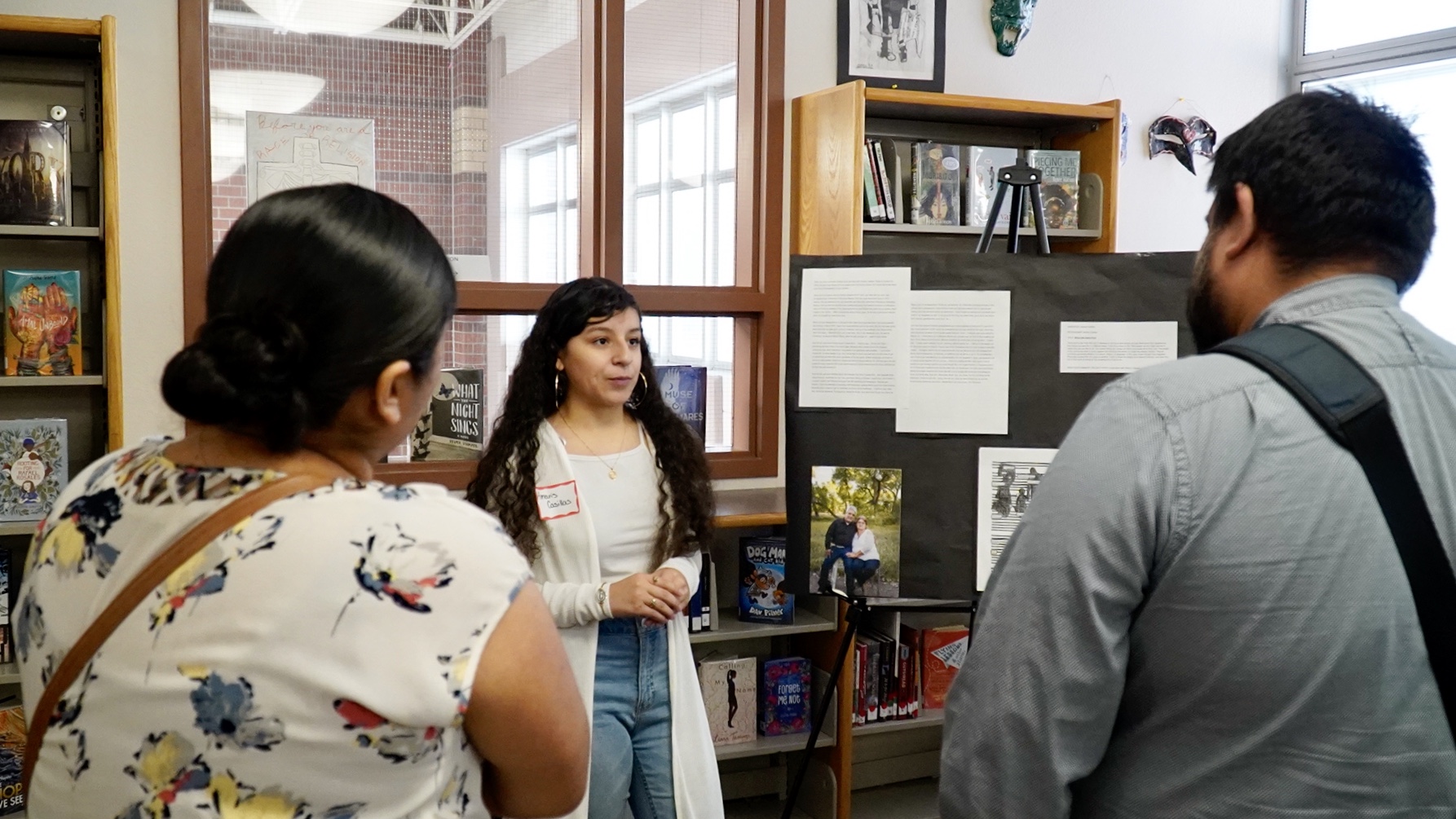
Bruce Randolph ninth- and 10th-grade students showcase their Fall 2019 Youth Memory Project with community members.
The Youth Action Team’s initial advisors — Chrissy Chard, Ph.D., assistant professor with CSU’s Graduate Program in Public Health and the Department of Health and Exercise Science, and BRS teacher Gabriela Molinar, M.A. — hosted weekly meetings with youth, which went virtual in response to COVID-19, to “select and flesh out a specific project,” Chard said.
In line with best practices in youth engagement, YAT students are compensated for their time. They also receive support from the Adult Champion Team (ACT), a group of adult mentors from each of the National Western Center’s founding partner organizations.
After consulting and engaging with the ACT, the YAT decided to focus its efforts on creating an internship program to engage more students with the National Western Center project.
“The goal of the internship program is to hopefully get students involved in the community and have their voices heard,” said YAT member Isabella Riedel, adding that the program will help students learn skills they can apply in their pursuit of college and careers.
Chard emphasized the YAT’s commitment to accessibility as a core element of the program, which was created by students at Bruce Randolph School.
“They’ve designed the application and eligibility requirements in a way that is inclusive for nearly all students to be eligible,” said Chard.
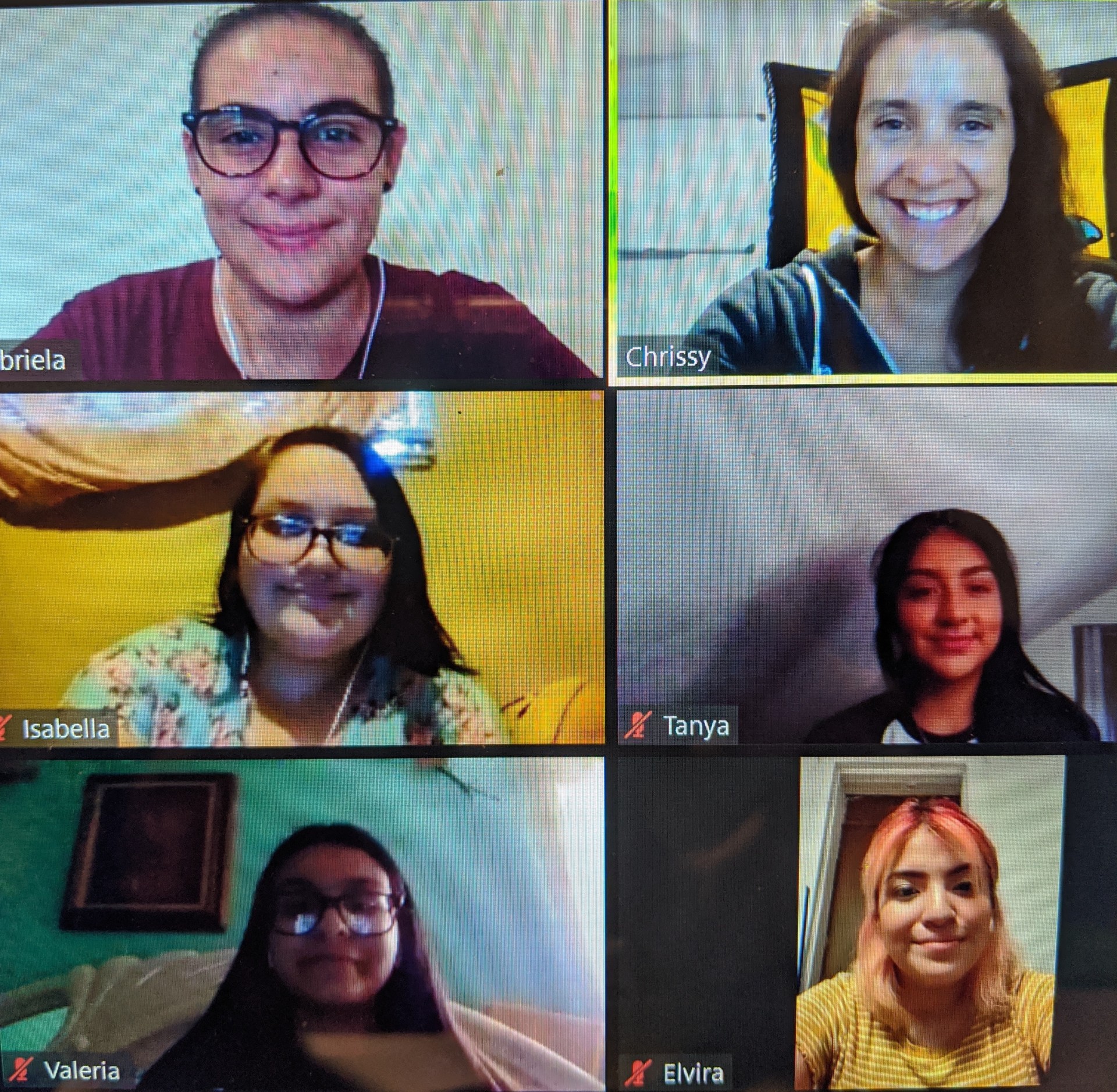
CSU Spur Youth Action Team meet via Zoom to discuss internship program planning.
Place-based investment
Anchor institutions often vary in their specific program offerings and engagement strategies, but all share a common commitment to investing directly in the well-being of neighboring communities.
Place-based investment can come in many forms, such as hiring locally for new or planned developments and purchasing goods from local and minority-owned businesses.
With the goal of fostering a local talent pipeline for the construction of CSU Spur, the CSU System connected JE Dunn, the project’s general contractor, with WORKNOW, a community-focused inclusive hiring platform.
“We have a unique opportunity to not only help create pathways for those in the Denver community to start a career in construction, but to do so on local, lasting, impactful projects,” said Andrew Gilstrap, group manager for JE Dunn.
JE Dunn and key trade partners on the project will communicate emerging hiring needs to WORKNOW to help fill open positions with local workers, while also sharing the organization’s resources with on-site tradespeople.
In June, the CSU System coordinated an art procurement committee to select artists to produce permanent installations in each of Spur’s three buildings. The committee selected eight artists from a pool of more than 445 local, national, and international artist submissions — four of the artists selected are Colorado-based.
The selected artists are encouraged to engage with the local community and CSU students as part of their work with CSU Spur.
“Placemaking is driven by an acute understanding of the community of which the project is a part, and which the project will serve,” said Ashley Stiles, CEO and founder of Tribe Development Company, who helped facilitate the art procurement process. “Including a diverse artist group, both geographically and by background, allows us, the viewer, to better understand the impact of universal concepts through the unique lens of each artist.”
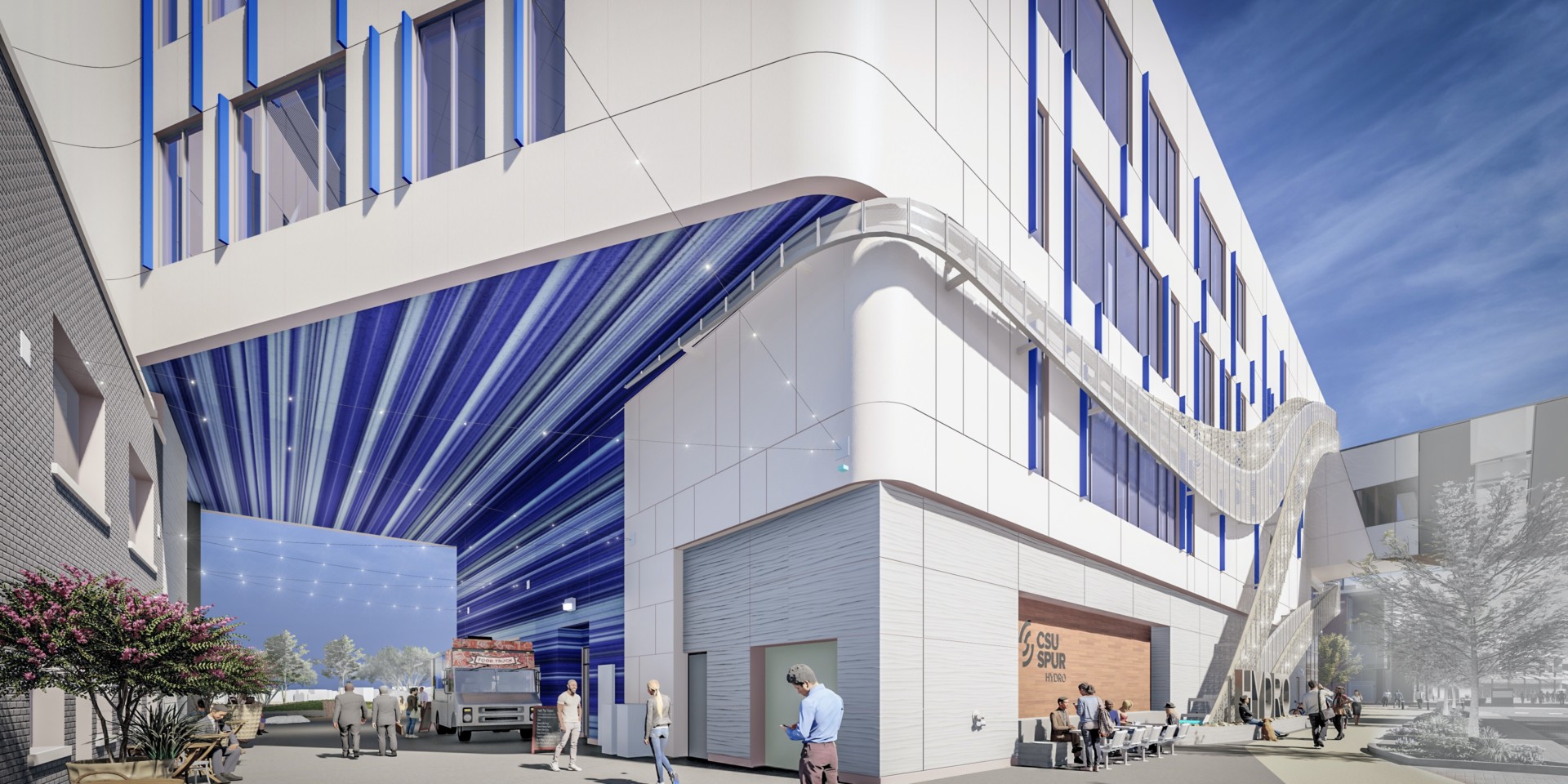
Rendering of “Whirlpool,” one of Spur’s eight permanent installations, by Denver native and Globeville resident Anthony Garcia, Sr. (Birdseed Collective).
Rather than purchasing from corporate vendors, the CSU System team has made it a regular practice to purchase catering and meals from local producers and restaurants to support small businesses within GES; Comal Heritage Food Incubator, a restaurant business incubator created by Focus Points Family Resource Center to support immigrant and refugee entrepreneurs, has become a consistent partner in this space.
“These steps reflect Spur’s recognition that economic opportunity is a key outcome of their new presence in the neighborhood,” said Michelle Sturm. “If done deliberately, they can help create pathways for current GES residents to avoid displacement due to rising land values — with the intention that residents can not only remain in place, but have the opportunity to actually thrive in place.”
Healthy, safe, sustainable
CSU Spur’s anchor strategy also focuses on providing education, resources, and services intended to promote healthy living and safe, sustainable environments.
One of CSU’s longest-standing programs in GES is an annual animal health clinic. Now in its seventh year, the clinic brings together nonprofit partners including, Focus Points Family Resource Center, Dumb Friends League, and Clínica Tepeyac, to provide veterinary care and support services to hundreds of companion animals and families in north Denver.
Dr. Danielle Frey, director of international student experiences for D.V.M. students at CSU, has helped organize the annual event since its founding, and sees the clinic as an “incredible opportunity” to establish relationships with residents and support organizations in GES.
Frey noted that many participating students are also enrolled in Spanish for Veterinarians, a series of Spanish language courses for students in CSU’s veterinary program.
“This allows our students to build on language and communication skills that help to break down one of the barriers to [GES residents] finding care for their pets — by speaking to owners in their native language about the health of their beloved animals,” said Frey.
Dumb Friends League, the clinic’s veterinary partner, now provides regular companion animal services in GES and will open a donor-supported veterinary clinic in Spur’s Vida building, which will also offer affordable veterinary care and hands-on learning for CSU veterinary students and the general public.
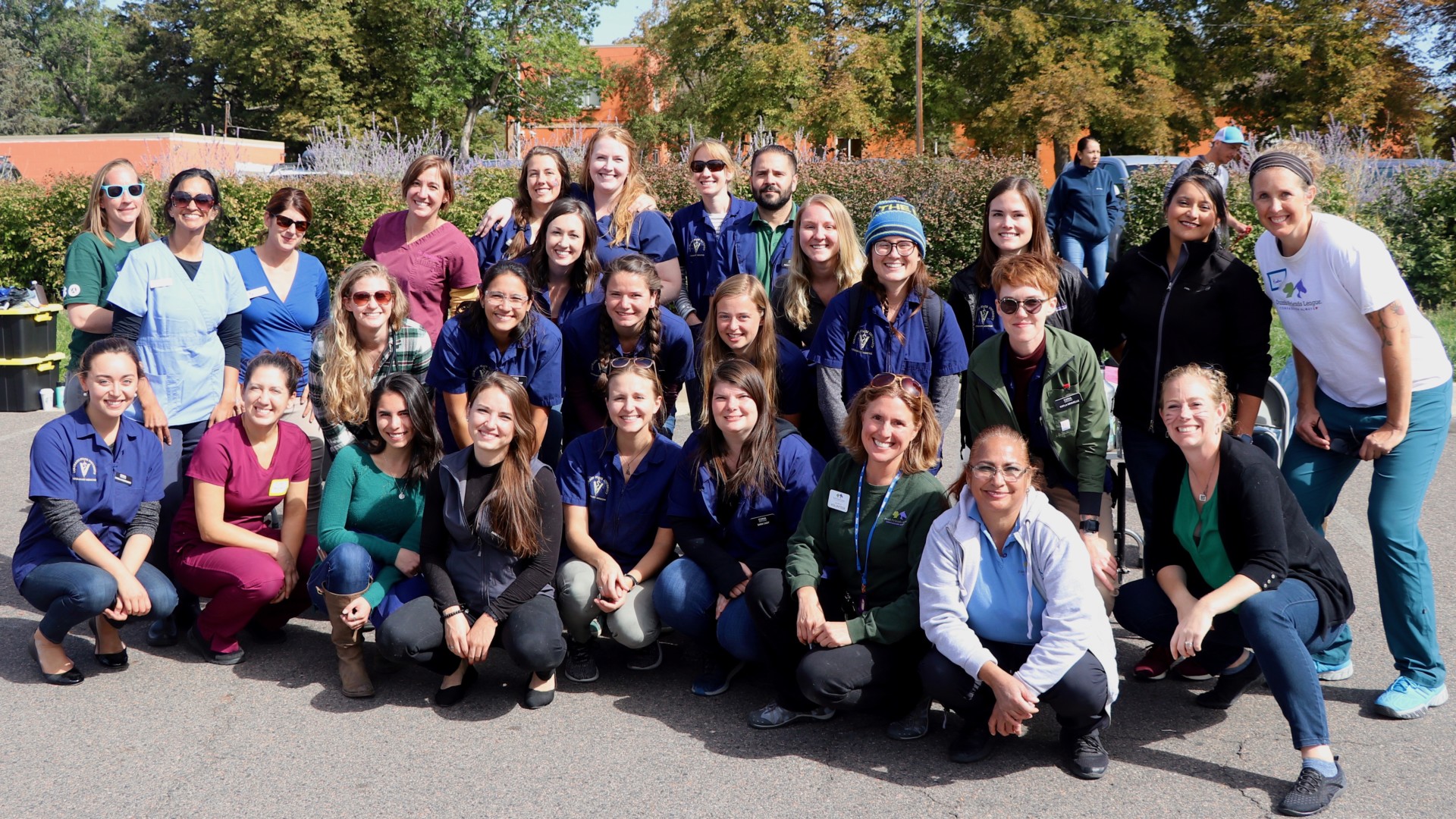
Student-veterinarians from CSU’s College of Veterinary Medicine and Biomedical Sciences pose for a group photo at the 2019 Focus on Health Community Clinic.
Since early 2017, CSU’s Temple Grandin Equine Center (TGEC) has operated its second location at a temporary site at the National Western Complex, where it provides equine-assisted activities and therapeutic services for individuals with disabilities, educational courses for industry professionals, vocational rehabilitation, and community outreach events. The TGEC also provides volunteering and employment opportunities in partnership with local organizations such as Laradon, which offers support, education, and training to individuals with various developmental disabilities.
“The breadth of these programs is far-reaching, available to youth through seniors and individuals of all abilities,” said Adam Daurio, the TGEC’s director of administration.
The TGEC will move into the Spur Vida building when it opens in 2022, where it will be able to expand its programmatic reach to more community members throughout Denver.
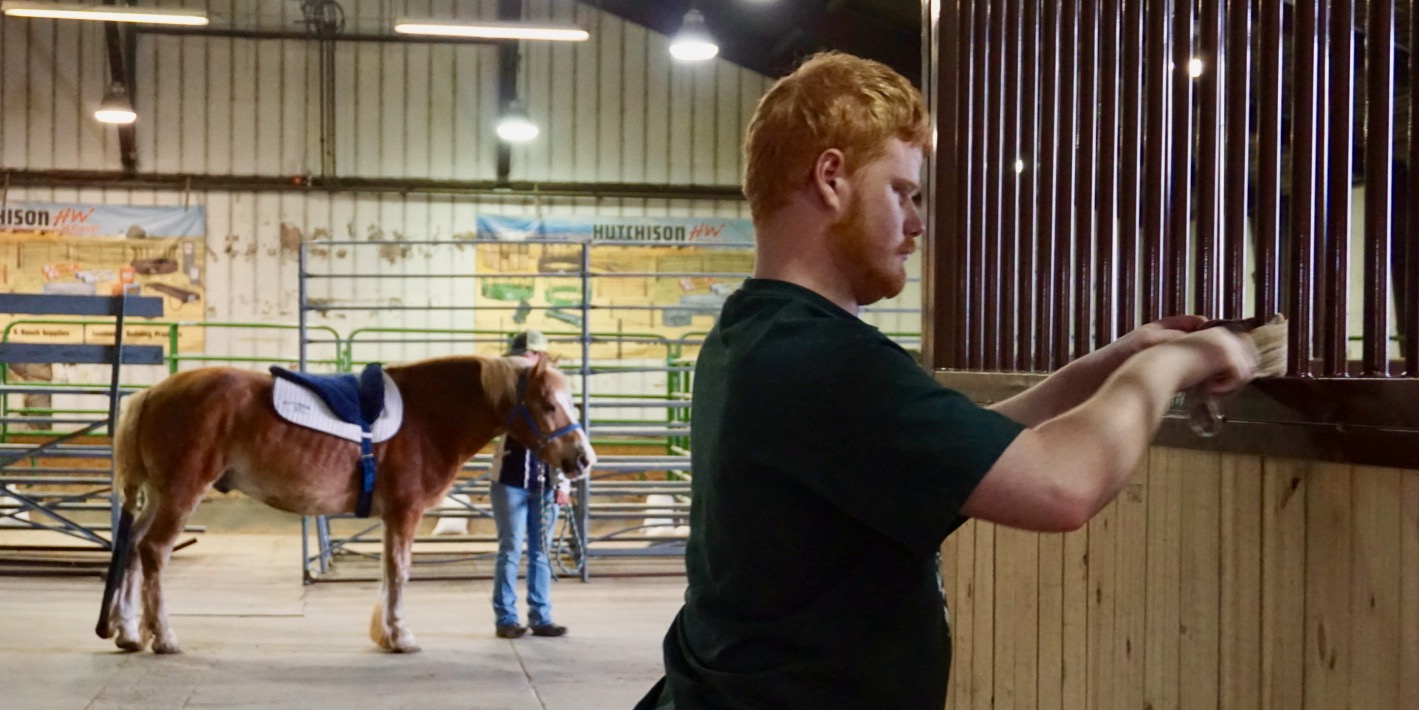
Former Laradon volunteer and Temple Grandin Equine Center employee Michael McGrady assists with upkeep at the Center’s temporary location near the future site of CSU Spur.
Spur’s anchor strategy also includes conservation-focused research initiatives such as the annual BioBlitz to contribute to the health of the area. As part of BioBlitz, now in its second year, CSU programs such as the Geospatial Centroid and Colorado Natural Heritage Program work alongside external partners like the Butterfly Pavilion and Denver Zoo to log a baseline of the flora, fauna, and environmental conditions around the South Platte River, which will be accessible from CSU Spur. The findings will then be used for long-term research and monitoring, and to inform conservation and restoration efforts along the river.
In the coming years, the effort will become a community science project as part of CSU Spur.
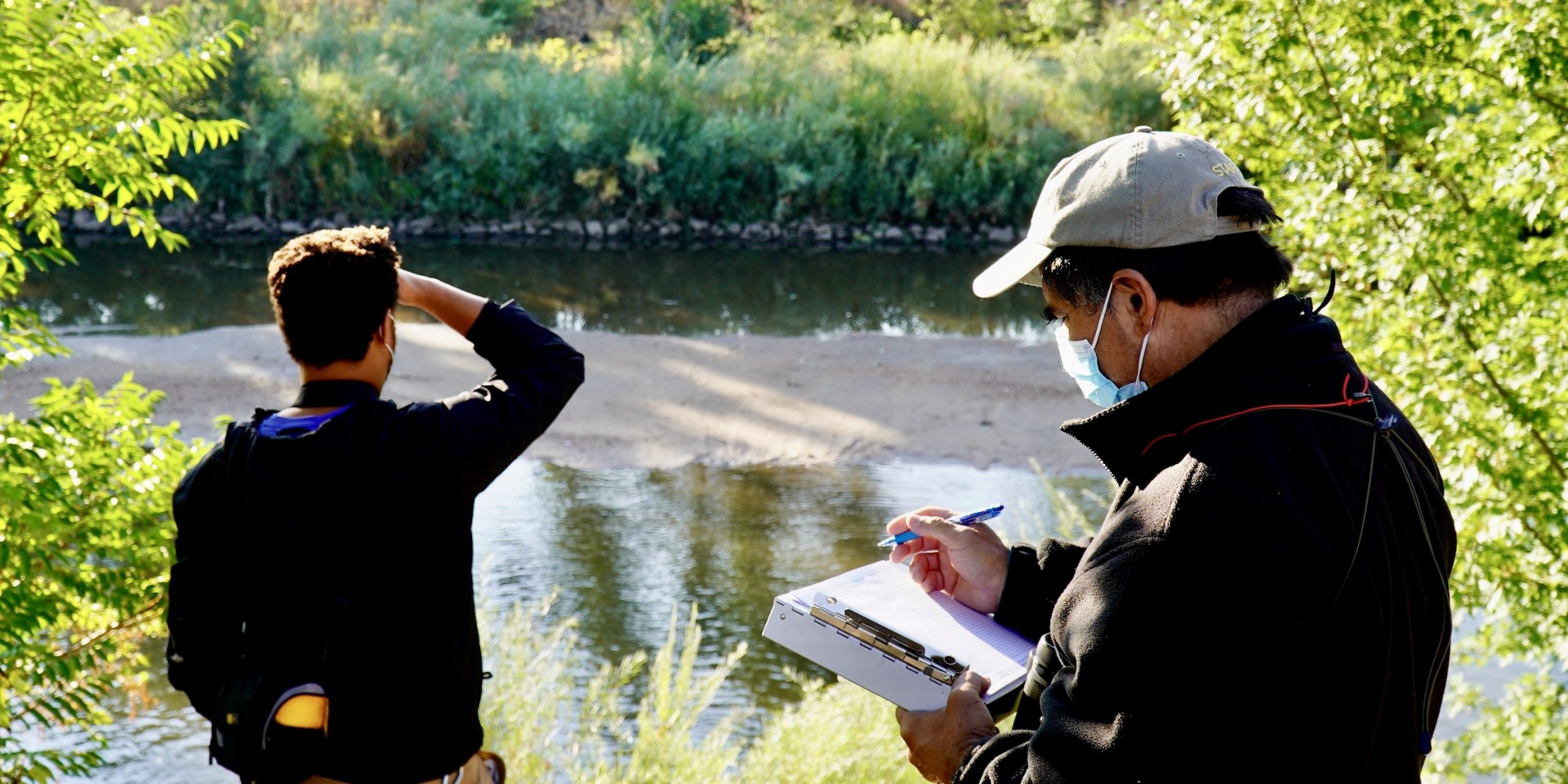
Researchers from the Denver Zoo catalog native bird species on the S. Platte River during the 2020 CSU Spur BioBlitz.
While the physical CSU Spur campus will not open fully to the public until 2022, the CSU System has been using the anchor institution framework as a guide for current efforts and will continue to focus the campus’s community outreach and educational programs in ways that benefit the surrounding communities.
About CSU Spur
In 2022, the CSU System will open CSU Spur, where innovative ideas and unforgettable experiences come to life at the National Western Center. CSU Spur’s three buildings at the center of the landmark project in north Denver will ignite and fuel new ideas around water, food and health and their impact on our lives and our world. Spur is where learning is open and accessible to all. Where researchers tackle the world’s most pressing problems around water, food and health. Where art and culture challenge and surround you. Where rural and urban, local and global intersect. Learn more at csuspur.org. Follow @CSUSpur on Twitter, Instagram, Facebook, and LinkedIn, and subscribe to the Spur quarterly newsletter.